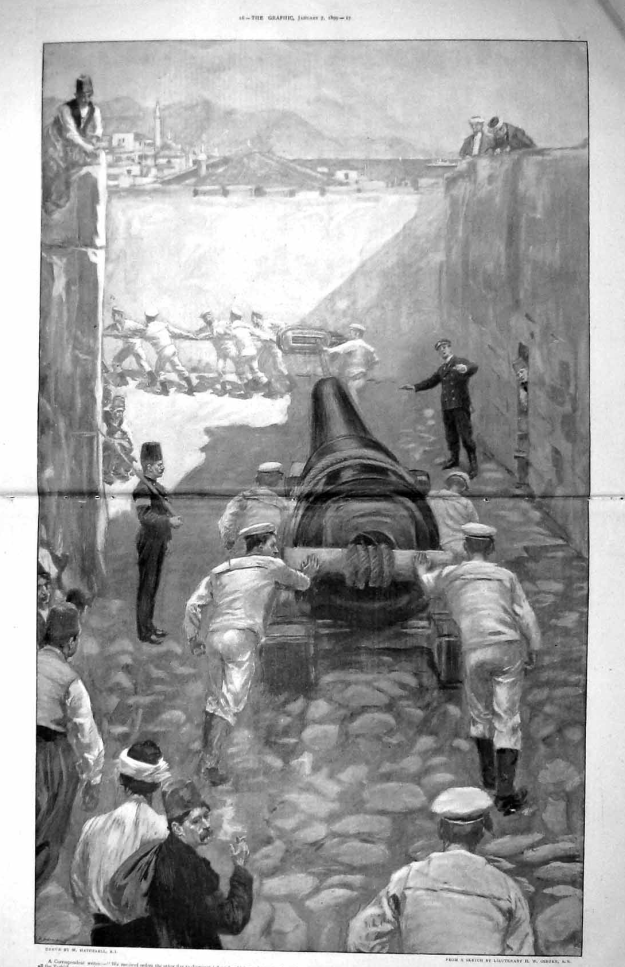Amongst the first troops sent to Crete were the 1st Battalion, the Seaforth Highlanders sent from their station on Malta to Crete in April 1897.
In this depiction of their departure from Malta, the illustrator has included a number of goats in the picture. Unfortunately for the Seaforths, and the other British troops in Crete, the presence of goats in both Malta and Crete had serious implications for their health. Mediterranean Fever (Brucellosis) transmitted from infected goats, was to prove, along with dysentery and malaria, one of the major sources of casualties amongst the British.
The names of 187 British soldiers and sailors who died on Crete between 1897 and 1909 are listed on memorials in the Commonwealth War Graves cemetery at Suda Bay, Canea, and the churchyard of Agios Konstantinos, Iraklion. Of these, 17 were killed by ‘enemy action’ in rioting in Iraklion (Candia) on the 6th September 1898, four were drowned and the rest died of disease. These names do not include those who died in Malta and elsewhere of diseases caught in Crete, including one member of the 1/Highland Light Infantry who, according to the Dundee Advertiser of 29th December 1898, died as his ship sailed into Plymouth Sound on the return from Crete, but do include those who died in Crete of disease contracted before arriving in Crete.
















